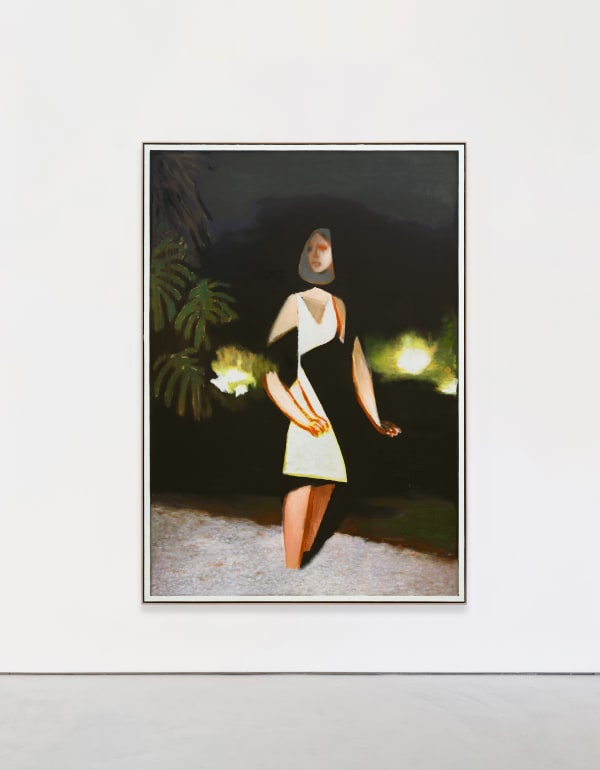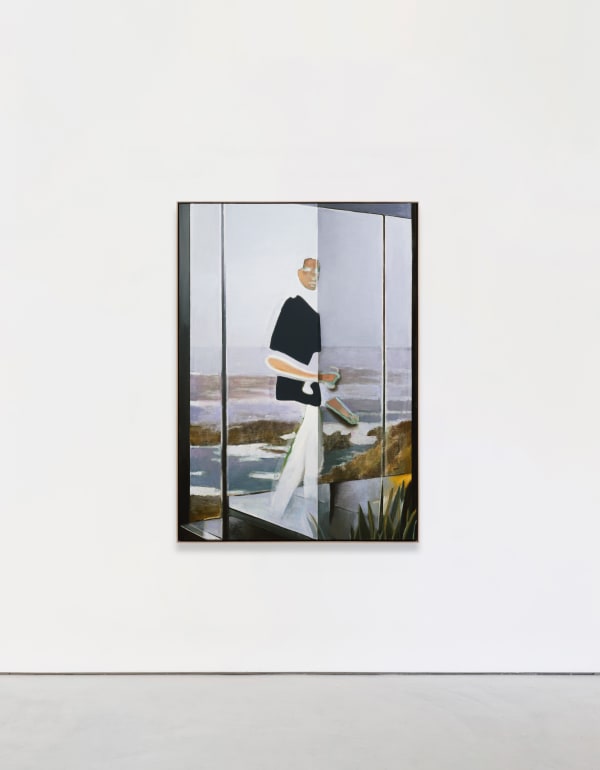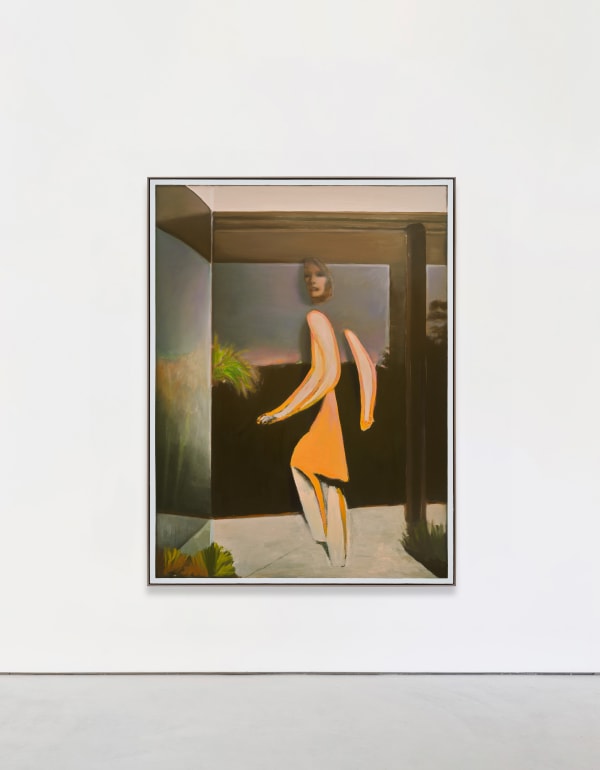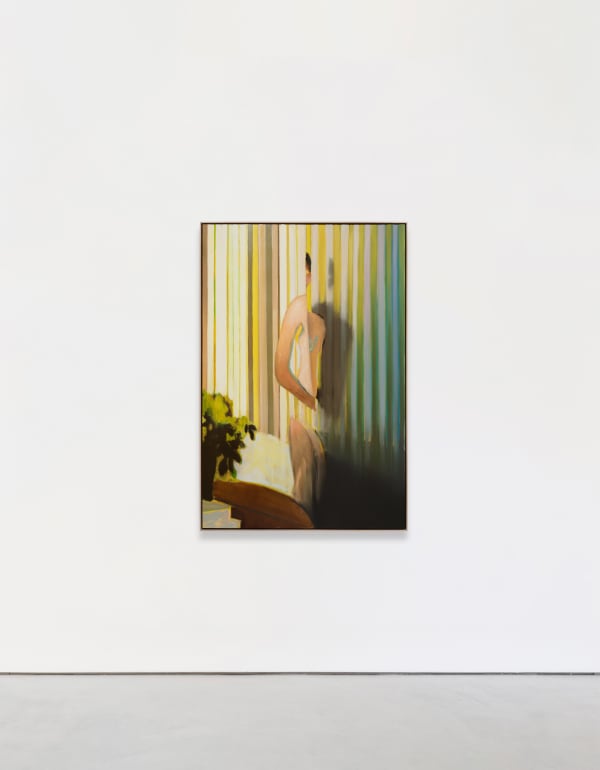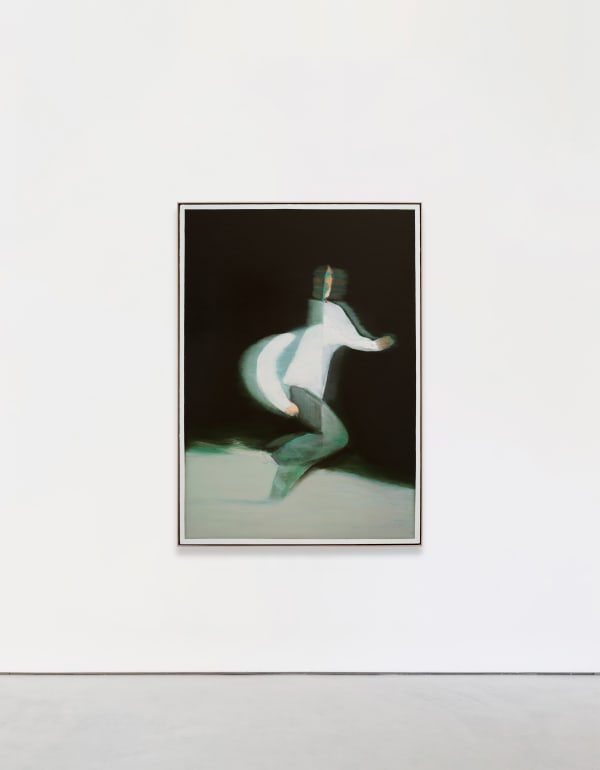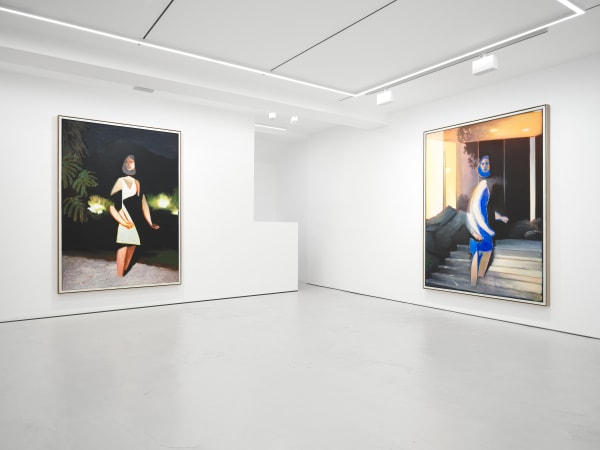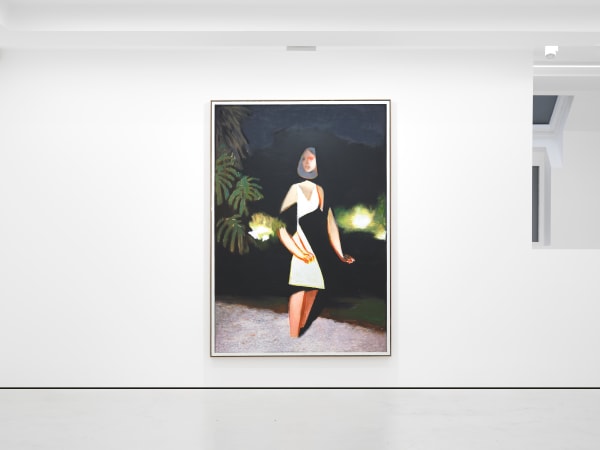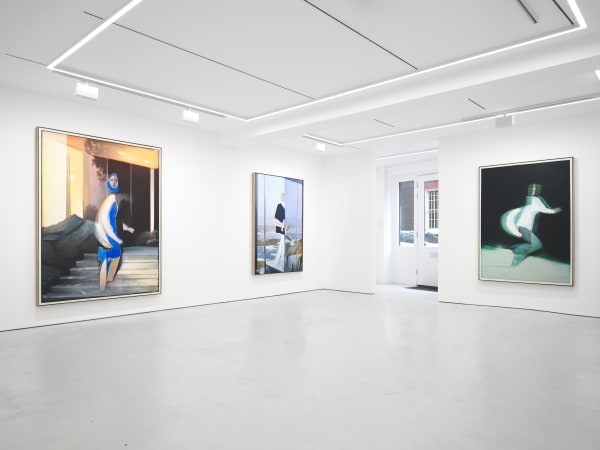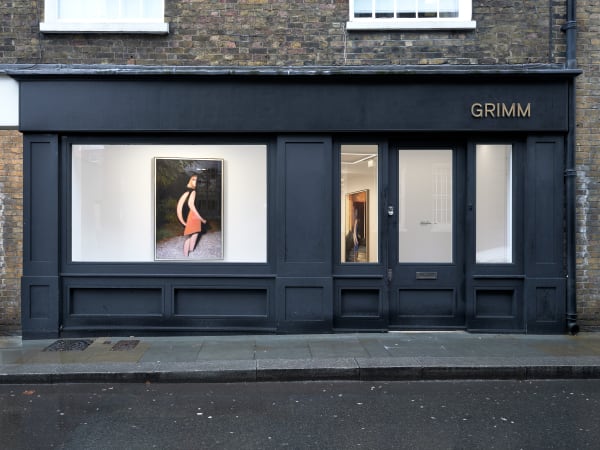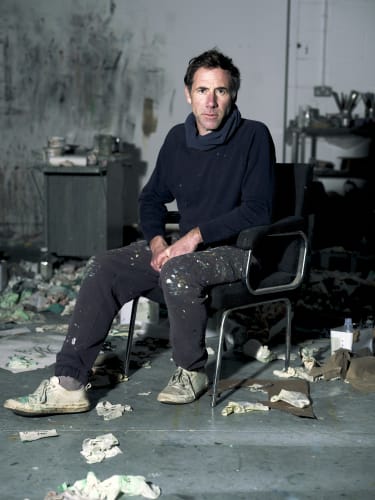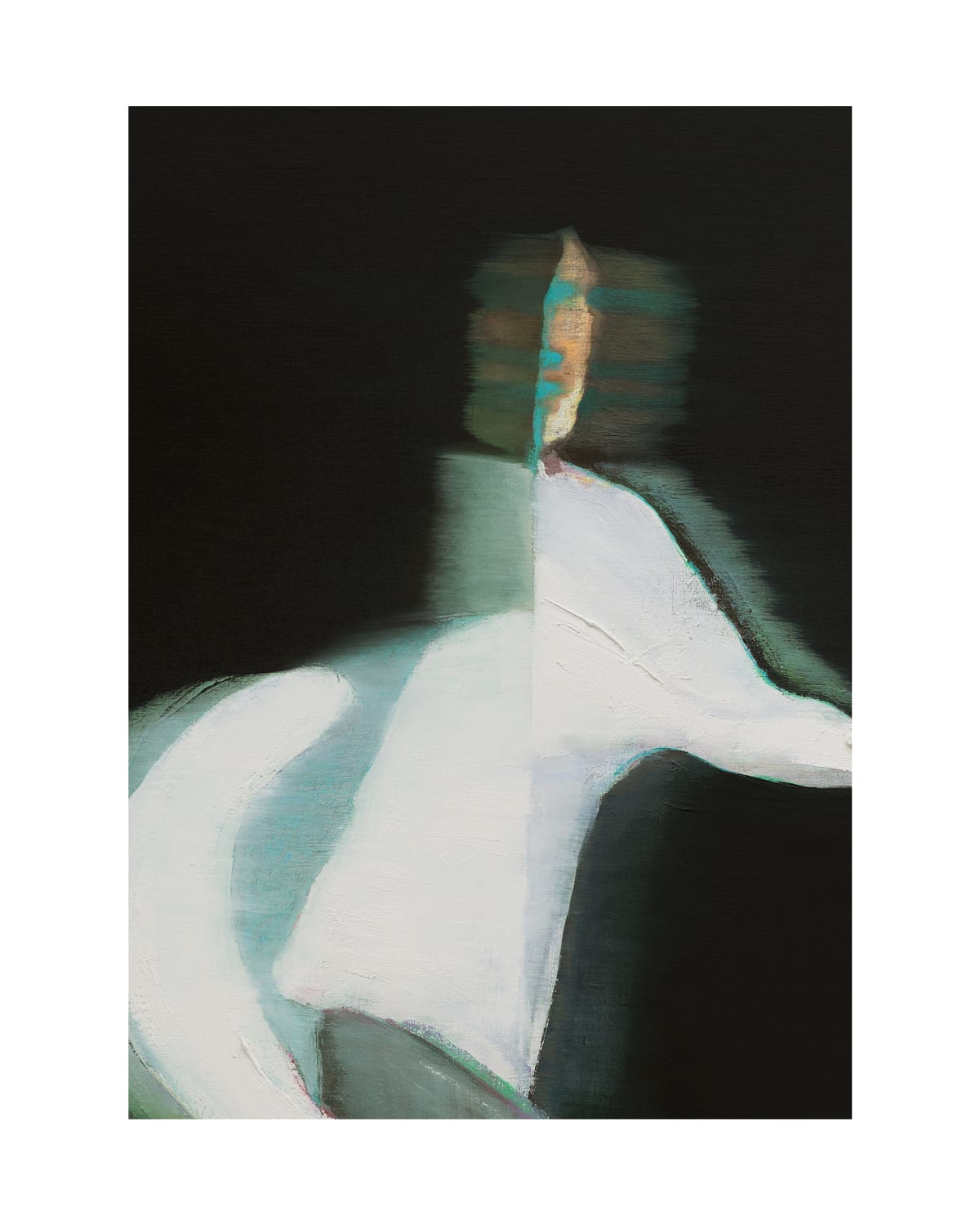Jonathan Wateridge: Vanishing Point
GRIMM is delighted to present Vanishing Point, an exhibition of new paintings by Jonathan Wateridge on view at the London gallery from February 27 to April 5, 2025. This is the artist's first solo exhibition since joining the gallery last year, and his first solo presentation in London in five years. A new publication will be published to accompany the exhibition.
Often depicting isolated figures, in both interior and exterior spaces, Wateridge’s canvases evoke a duality of familiarity and strangeness. In recent years, Wateridge has reinvented his visual language, presenting a distinctive vision that combines high-modern formalism with echoes of the cinematic. In contrast to the modelled realism of his earlier works, his current figures appear ghost-like and charged with feelings of disquiet and uncertainty.
In Figure Running, a glowing figure is shown to be in motion within an indeterminate ground. As though caught in the dazzling glare of searchlight, the besuited man seemingly sprints, his arms and legs reduced to their essential form within a blurry haze. The swarming void around him appears ready to engulf its next victim; the indeterminate nature of this transitional space adding to the sense of peril that pervades the scene.
Other locations from which Wateridge’s figures emerge seem quintessentially mid-century Los Angeles, yet suffused with a sense of the uncanny; as if a set builder had created their own versions of John Lautner, Rudolf Schindler or Richard Neutra: all glass partition and sweeping driveway.
Architectural access and threshold becomes a motif here, whether the crunch of coarse gravel or the sheen of poured concrete and stone. Often Wateridge’s subjects become enmeshed within these environments; bodies are both flattened by and sculpturally occupy the pictorial space. Legs are summarily severed at the shin or ankle, suggesting the figure is immovably cast forever into the ground below or whose feet of clay are now broken or dissolved. As people and settings become materialised through paint, they appear at once to be dematerialising as tangible things. They are frequently captured in a state of flux, perennial moments in which they are dissolving and re-appearing, as if caught in a disquieting dream.
In Blind, the nude is at once enveloped within the vertical stripes and yet still casts a shadow upon them. The blinds start with bright greens, yellows and ochres, reminiscent of the fauna on the table in the foreground and the cool tones of glass, before darkening to greys and blues as they progress to the right, absorbed into a cool void.
In Afterglow, a figure looks back over her shoulder, as if upon or beyond the viewer, suggesting a danger that resides within the viewer’s own environment. It is unclear if she is entering or fleeing the building before her. The cool blue of the figure’s dress continues into her face, where the rabbit-in-headlights expression of mouth agape and furrowed brow is presented as a continuous form. The bleaching or total removal of flesh tones is reminiscent of the photographic technique of solarisation, in which dark and light tones are partially or fully inverted, giving the sense of a ghostly presence, its features hollowed out and disembodied. Often faces, as well as other parts of the canvas, are also scraped back with sandpaper or palette knife, removing the texture of brushstrokes as a means of authorial negation, as though the faces have supplanted themselves on to the canvas independently. The resultant haze is at once ethereal and lustrous, as though the pigments are woven into the linen.
Throughout, the fluidity and indeterminate nature of Wateridge’s subjects instils within them a sense of existential solitude. Any certainty that has previously been available to them is no longer there. These atomised and translucent beings are seamlessly interrupted by or absorbed into their affluent environments, inviting contemplation on the social relationship between these figures and the fragile insecurity of their world.
About the artist
Jonathan Wateridge (b. 1972, Lusaka, ZM) lives and works in Norfolk (UK). His work is the subject of two comprehensive monographs Uncertain Swimmer (2023) and Enclave / Expatria (2019) published by Anomie.
Selected exhibitions include: A Room Hung With Thoughts: British Painting Now, curated by Tom Morton, Green Family Art Foundation, Dallas, TX (US); Self-Portraits, GRIMM, Amsterdam (NL); Afterparty, Nino Mier Gallery, New York, NY (US); Beach, curated by Danny Moynihan, Nino Mier Gallery, New York, NY (US); Aftersun, Nino Mier Gallery, Brussels (BE); Mixing It Up: Painting Today, Hayward Gallery, London (UK); This Side of Paradise, TJ Boulting, London (UK); Swimmer, Galerie Haas, Zurich (CH); Enclave, Pace London / HENI, London (UK); Colony, Galerie Michael Haas, Berlin (DE) and So British! 10 Masterpieces from the Pinault Collection, Esplanade Fine Art Museum, Rouen (FR).
Selected collections include: the Aïshti Foundation, Beirut (LB); AkzoNobel Art Foundation, Amsterdam (NL); Benedict Taschen, Cologne (DE); Didier Casimiro, Kiev (UA); Igal Ahouvi Collection, Tel Aviv (IL); Loed Evans, London (UK); Mollie Dent Brocklehurst, London (UK); Olbricht Collection, Essen (DE); Pinault Foundation, Venice (IT) and Paris (FR); the Rennie Collection, Vancouver (CA); the Saatchi Collection, London (UK) and Simmons & Simmons, London (UK).
